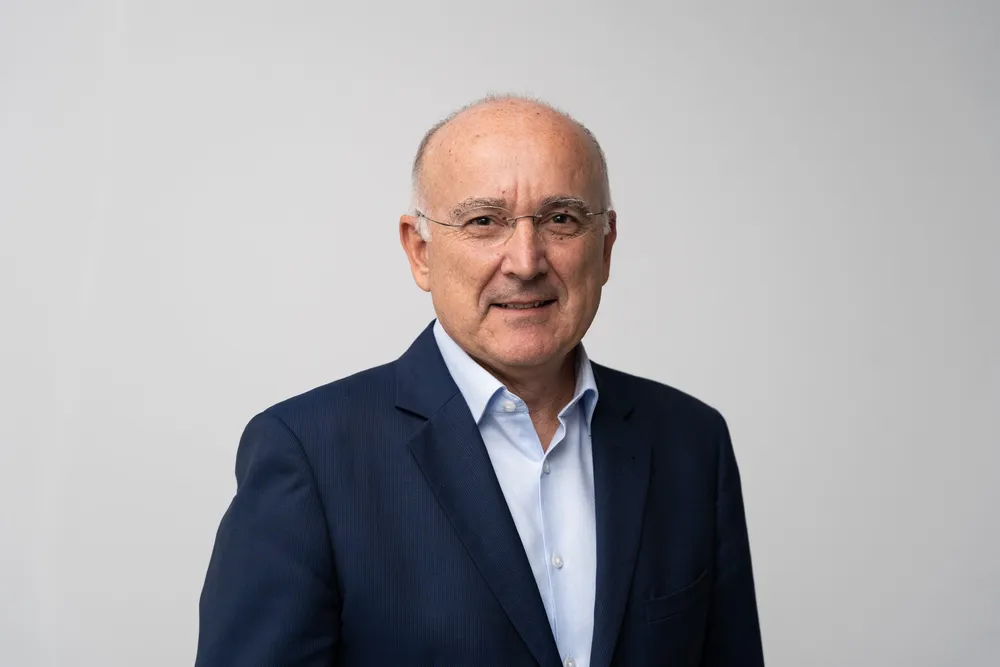Hitachi Energy chief on the 'fatal mistake' to make in volatile offshore wind market
Power electronics giant needs to be careful to ask 'right questions' of prospective offshore wind farm developers to make sure projects don’t fall through, says its renewable energy chief

The volatile offshore wind market is forcing Hitachi Energy to get smarter in dealing with developers, says its renewables chief, who discusses the “game-changing” deal that could show the way forward and the “worst” mistake that can kill suppliers like his own.
Swiss-headquartered and Japanese-owned Hitachi is a key player in the global offshore wind industry, supplying the high-voltage direct current (HVDC) cables, substations and power converters without which turbines would be stranded assets at sea.
Recent volatility in the wind sector “forces us to be even better,” said Parres, who has been head of renewables at Hitachi since 2021 and also chairs the System Integration Working Group at industry body WindEurope.
There was a time when “a developer has a project, you get an inquiry, you bid, eventually you win, you deliver,” he said. “That's how we've been used to doing business.”
“Things have changed quite a bit.”
“I really have to step up my learning and my understanding of the sector,” he said, in order to help Hitachi make the “right decisions” and ask the “right questions” of prospective customers.
These questions are becoming “less technical and more business-oriented,” he said, as Hitachi seeks more assurances that there is “certainty” around projects.
Hitachi had agreed to provide power electronics technology for the project, including next-gen grid stabilisation technology that would be making its debut in the European offshore wind market.
“It's a pity that that decision was taken,” said Parres. “It was a very tough message to swallow for the market.”
Going forward, he said it’s important for Hitachi to “understand what happened” and what the “fundamentals are” to help avoid such incidents in the future.
Parres stressed that Hitachi has built up a relationship with Orsted over many years and that, “in this current environment, more than ever, we do stick very closely to our customers and our partners.”
From a Hitachi perspective, he said the “worst case” in such a scenario is the company losing manufacturing slots. This comes at a cost, he said, but this is “inherent with the risk of doing business”.
‘Get this wrong, and you will die as a company’
“The market is heavily constrained,” said Parres. “Our raw materials that we are buying, the cost has increased very, very significantly. So it's a reality. First things first, I think it's important we recognise the reality.”
There is “nothing worse” than going to the market, “not understanding where your costs are and keeping selling.”
Do that, said Parres, and “you will die as a company.”
Hitachi has learned the value of “being very open, very transparent with our customers,” he said. “Very difficult conversations, but we had them from the beginning.”
While the business environment for the wind sector is difficult, Parres stressed that “technology can help.”
For example, he said Hitachi has “massively” reduced the weight of its platforms through technology. “That's what we have to do. We as a supplier, as a technology company and leader in technology, we have to reduce the footprint, the weight and improve the performance.”
‘A game-changing deal – they had the muscle for it’
Standardisation is “absolutely critical” to helping project economics and delivery in the wind industry, said Parres.
To that end, he said there is a need for more framework agreements with standardised portfolio design. “Because we are still very much in a world of one-off, very specific project, this in blue, this in red, this like this and this like that, that increase the cost.”
Here, he said that Hitachi’s framework agreement with Dutch and German grid operator Tennet was a “game-changer.”
In 2023, Tennet signed a staggering €30bn ($33bn) of agreements with supply chain players including Hitachi Energy in a move aimed to bring power from 28GW of wind projects in the German and Dutch North Sea to shore.
“That has really transformed the way the industry was looking at supply chain constraint and de-risking,” said Parres.
He noted that Tennet, which is owned by the Dutch state, “had the muscle” for such agreements.
“But I think we've seen how everybody in the supply chain and the value chain has learned from that.”
“Framework agreements like these long-term agreements give us the visibility to be able to standardise,” said Parres, “so we are not working on a portfolio of projects.”
“We can save them on engineering time, I can reduce delivery time, and then I know how much I will have to manufacture,” he said, adding that the agreements also allow Hitachi to invest billions in its facilities.
“So, it's clear that this has changed our business radically.”
Hitachi this year unveiled a more than $9bn global investment program, he said, a reflection of the benefits this long-term approach can bring.
For developers, he said such deals are a “tool in their toolbox. Now they have to choose it probably more accurately, more precisely, because they don't have this freedom or this luxury they had some years ago.”
(Copyright)